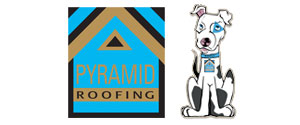- Do you subscribe to Dharma Dog Training’s Newsletter? You should.
- A Unique Campaign from The Humane Society of the United States
- Rabid bats in Omaha- Stay safe, prepared with these tips
- Springtime Activities in Omaha
- Mill Dog Monthly from Bailing Out Benji
- World Spay Day, Legislative Alert in Nebraska
- Attend the Nebraska Rescue Council’s monthly meeting this Saturday
- Five Hard-to-Ignore Reasons to Adopt!
- Paws in Pink to Benefit Breast Cancer Foundation
- VCA, Inc. Acquires MidWest Vet Specialists from Kansas State University
Picking a dog crate and using it effectively

Different dog trainers have different philosophies, techniques and experiences, but one thing that is almost universally agreed upon is having a crate and utilizing it effectively.
Some dogs will love their crates and others will not, but developing a relationship between your pup and its crate is important for many reasons. Puppies benefit from having a crate as it provides a safe space and introduces them to a training tool you’ll likely use all its life. Dogs of all ages can benefit from using a crate as a short-term training tool and a piece of safety equipment.
From the Association of Professional Dog Trainers website: “Crates are a valuable tool for house training, as well as for managing the environment so dogs avoid developing problem behaviors such as destructive chewing and counter-surfing.” Introducing the crate as a place where “potty doesn’t happen,” chewing on specified things is allowed and safety can be found is important. Crates also provide safe restraint in the car and make it easier to travel with your dog by providing short-term confinement options in a hotel or anywhere else you might visit, according to the site.
Getting your dog used to being confined to a crate for a short period of time will be useful in a number of situations. Whether your dog is in its crate because of inclement weather or an emergency, because it’s in a boarding situation, or it’s spending some time at the veterinarian, a dog that is used to and comfortable in a crate is better than one that is not.
So, when you get a puppy or introduce an older dog to its first crate, how should you do it? Here’s the best tip: don’t simply put your dog in its crate an expect everything to be happy. Introducing your dog to the crate should be a gradual process. A sudden or forced introduction will likely result in your dog resenting you and this training tool.
Construct your crate and let your pup examine it a bit. If it gets inside, that’s great! Once that happens, use the crate in short periods so it doesn’t appear as a place the dog doesn’t ever want to be. The crate is also not intended to be a tool used for punishment. Sending a dog to its kennel when it is naughty won’t deter it from exhibiting the same behavior it used to get itself in a timeout. Dogs that are also anxious or scared should stay out of kennels until they accept the crate as a safe place.
Also, crates are not one-size-fits all. Again, comfort is important when associating dogs and crates. There are industry recommendations for certain breeds and corresponding crate sizes, but the best thing to do is to try sizes out and use common sense. Get a crate that fits your dog. Make sure your pup and easily turn around while standing. Make sure your pup can lie in any position it wants and still have a little room to spare. The crate should also have room built in for a dish, toys or anything else you might have in it with your dog. Here are a couple of “small, medium and large” recommendations per the manufacturers of dog crates:
The smallest breeds will fit in 18″ x 18″ crates. Again, if this crate provides enough room, great. If things seem a little cramped, there are 18″ x 24″ crates and other incrementally larger sizes.
Medium size breeds (beagles, smallish terriers, most spaniels) which weigh up to 50 lbs. are recommended to have crates around the 30″ x 30″ size. There are also 30″ x 36″ crates and other similar sizes.
The larger breeds need a little extra attention as they can spread out to be wider and longer than the smaller breeds, but there are a number of large sizes for these dogs. 36″ x 36″ crates can accommodate dogs up to 80 lbs. (industry standards) but crates can grow to be 36″ x 72″.
The crate shouldn’t be too small, but it also shouldn’t be so large that it doesn’t appear to be a separate area. For a complete list of sizes according to industry standards, click here.
Have questions about crate training? That’s good! Proper and effective training between you, your dog and a crate is important. Find a trainer in your area as crate training results are best when all parties work in conjunction with a trainer and a training program.
Thanks again to our January Training Sponsors who allow us to bring you this special content, including All About Dogs!
Related Posts
Latest News
-
How to Make Your Rescue Pet as Comfortable as Possible
Did you bring home a new pet from a shelter...
- Posted 6 days ago
- 0
-
How Having A Pet Can Change Your Life
Having a pet can open your heart in ways that...
- Posted 6 months ago
- 0
-
How To Improve The Life Of Your Senior Pet
Do you have an elderly fur baby and want to...
- Posted 6 months ago
- 0
-
Springtime Activities To Enjoy With Your Furry Friends
Are you preparing for warmer weather and want some ideas...
- Posted 7 months ago
- 0
-
Pros And Cons Of Microchipping Your Pets
Have you considered whether your pets should be microchipped and...
- Posted 8 months ago
- 0
-
The Best New Fun Toys For Dogs And Cats
The Best New Fun Toys For Dogs And Cats Did...
- Posted 8 months ago
- 0
-
Heartfelt Ways To Show Your Pet You Love Them
Did you know there are more ways to show your...
- Posted 9 months ago
- 0
























You must be logged in to post a comment Login